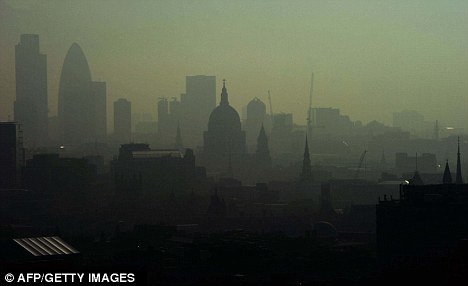Also discussed here: Bad Air Means Bad News for Seniors' Brainpower(ScienceDaily, Nov. 16, 2012)
And here: Does Air Pollution Hurt Memory of Older Adults?(WebMD, Nov. 16, 2012)
And here: Air pollution in towns and cities ‘ages brains of over-50s by three years’(MailOnline, Nov. 16, 2012)
And here: Exposure to particulate air pollution and cognitive decline in older women(Abstract, Weuve J, Puett RC, Schwartz J, Yanosky JD, Laden F, Grodstein F. , Arch Intern Med, Feb. 13, 2012)

Today’s feature review article takes a new look at the impact of air pollution on how well people over 50 think after analyzing tests assessing word recall, knowledge, language, and orientation. The results indicate that an increase of 10 micrograms/cubic meter of fine particulate matter (roughly the difference between living in a typical built-up cities to living in rural areas) translates into an additional aging of 3 years. This comes in addition to the other well documented effects of air pollution on health which shorten life expectancy (by 7-8 months in the UK for example). This prompts one to consider if the rise in dementia and Alzheimer’s might also be associated this in urban areas, along with the large increase in the population of seniors in many countries.
Key Quotes:
“Air pollution has been linked to increased cardiovascular and respiratory problems, and even premature death, in older populations, and there is emerging evidence that exposure to particulate air pollution may have adverse effects on brain health and functioning as well.”
“Fine air particulate matter exposures ranged from 4.1 to 20.7 micrograms per cubic meter, and every ten point increase was associated with a 0.36 point drop in cognitive function score. In comparison, this effect was roughly equal to that of aging three years”
“those living in areas with high levels of fine air particulate matter scored poorer on the cognitive function tests. The association even remained after accounting for several factors, including age, race/ethnicity, education, smoking behavior, and respiratory and cardiovascular conditions”
“Long-term exposure to PM(2.5-10) and PM(2.5) at levels typically experienced by many individuals in the United States is associated with significantly worse cognitive decline in older women.. the effect of a 10-μg/m(3) increment in long-term PM exposure is cognitively equivalent to aging by approximately 2 years.”














































